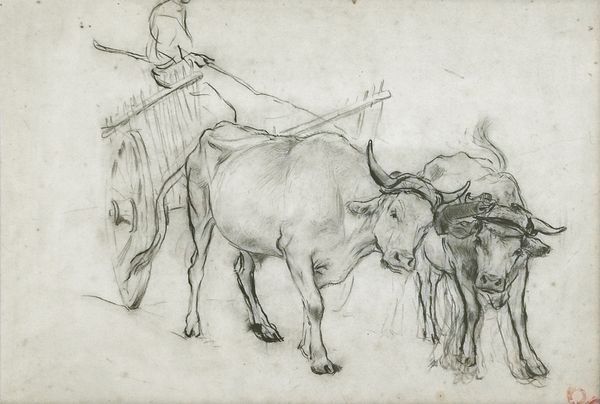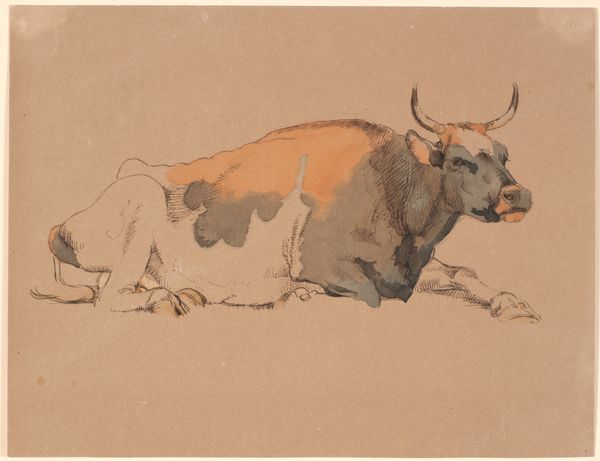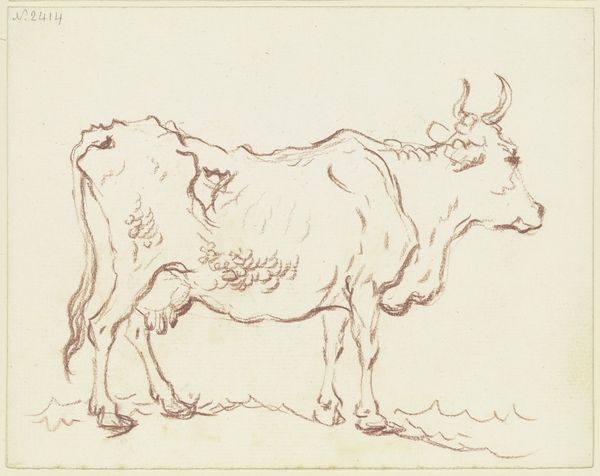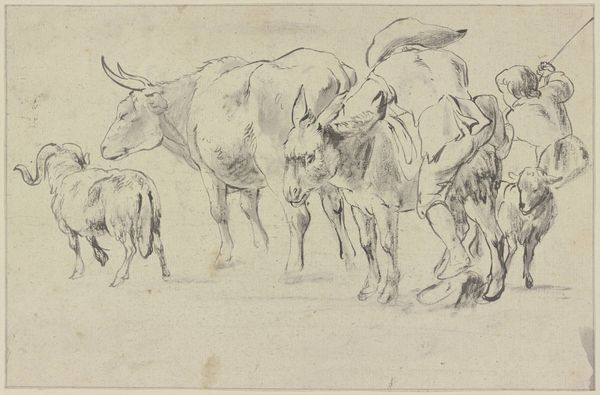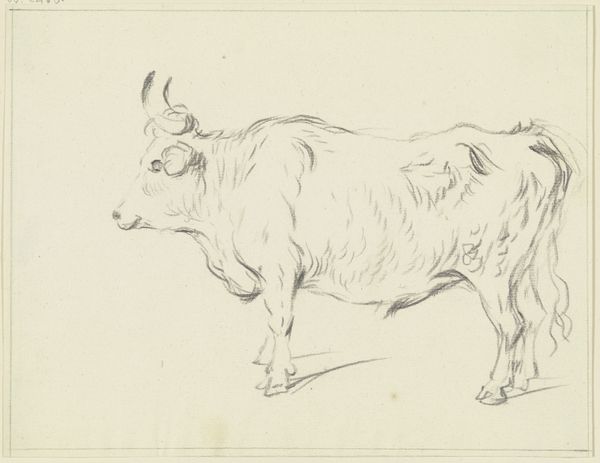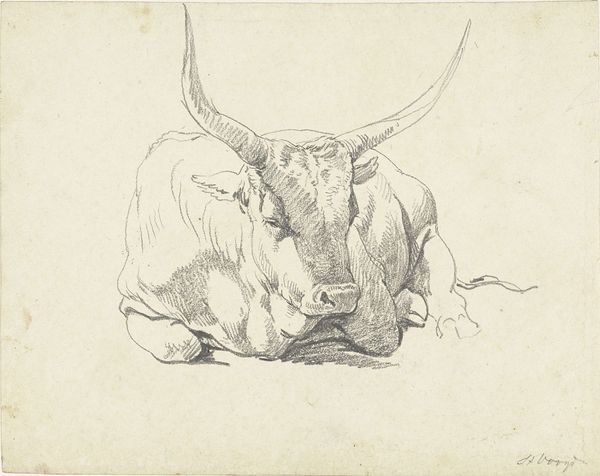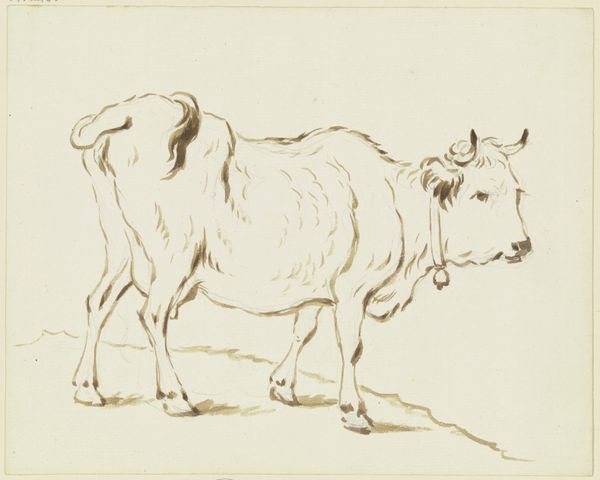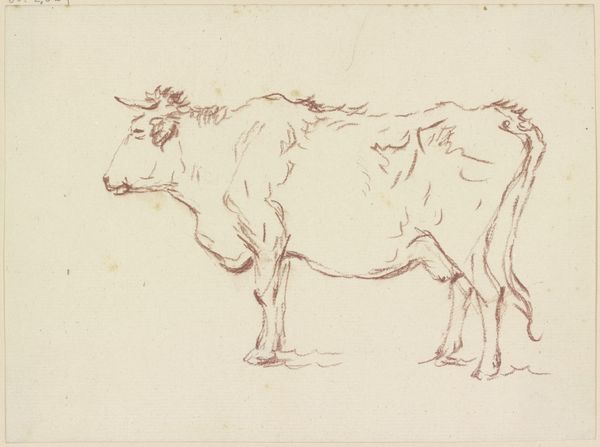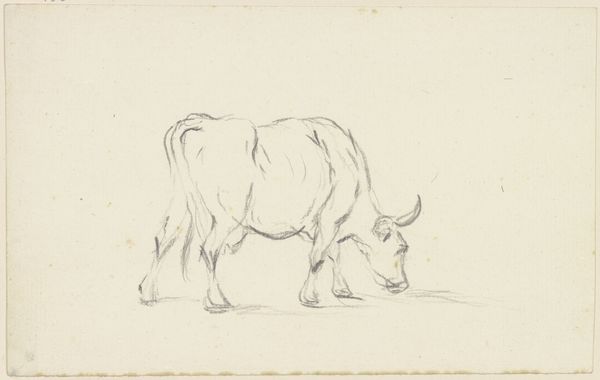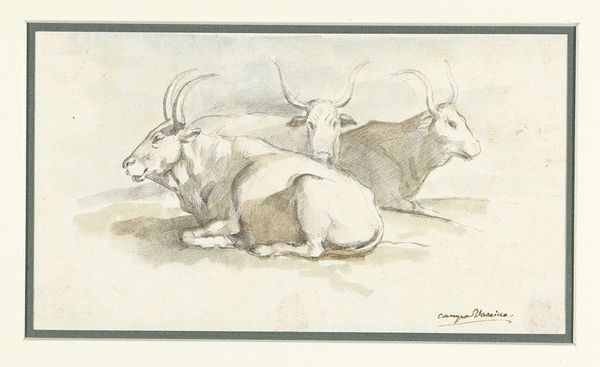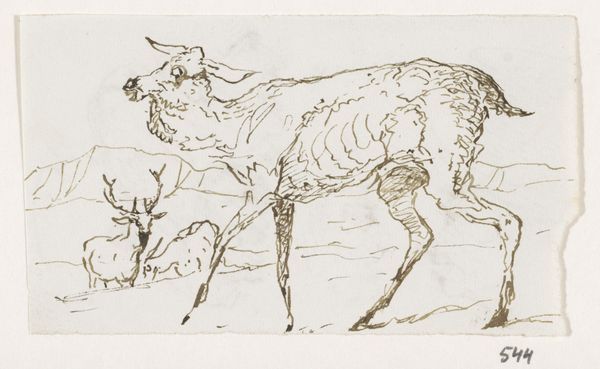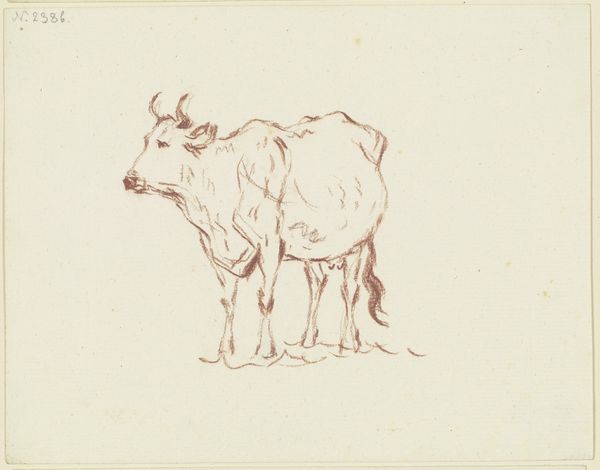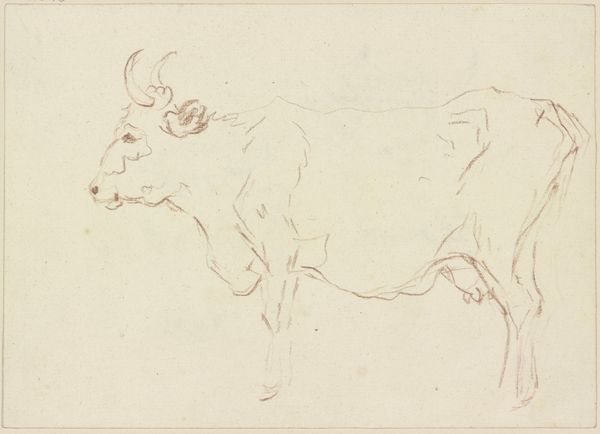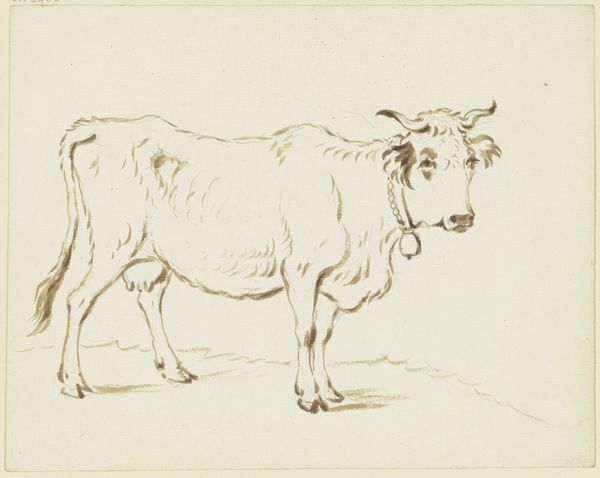
drawing, ink
#
drawing
#
ink painting
#
landscape
#
ink
#
romanticism
#
academic-art
#
realism
Dimensions: 194 mm (height) x 274 mm (width) (bladmaal)
Curator: This is Johan Thomas Lundbye's 1845 ink drawing, "To studier af en romersk tyr," or "Two Studies of a Roman Bull," currently held at the SMK in Copenhagen. Editor: It strikes me as rather serene, despite depicting these imposing beasts. The delicate lines, almost tentative, convey a sense of gentle observation. Curator: I see these animals as deeply entwined with the Italian landscape and labor of the period. The Roman bull wasn't merely livestock, but a symbol of agricultural tradition, embodying the exploitation of both animal and human labor that sustained the power structures of the time. Their subjugated posture here raises questions about power, agency, and the historical narratives we inherit. Editor: And formally, the restrained palette focuses our attention on the rendering of form and texture. Notice the variations in line weight used to suggest volume, and how the cross-hatching subtly defines the musculature and bone structure of these creatures. The anatomical precision, even in sketch form, speaks to the artist's dedication to careful observation. Curator: Consider, too, the bells adorning the bull on the left. They might signal the animal’s place in a larger economic system but also a claim of ownership, resonating with issues of social justice and animal rights that echo even today. Whose voices are heard, and whose are silenced in this portrayal of rural life? Editor: A powerful point. The contrast between the raw power of the animals and the fineness of the rendering adds a fascinating tension, and creates a depth often only available in academic-style realism. It begs the question, why ink and not a bolder medium? Curator: These thoughtful contrasts certainly offer complex and diverse perspectives, don't they? Editor: Indeed, reminding us that visual analysis offers a unique lens onto cultural understandings.
Comments
No comments
Be the first to comment and join the conversation on the ultimate creative platform.
